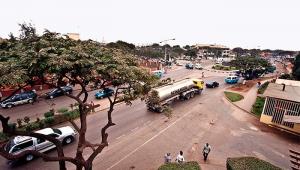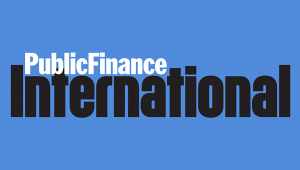By Judith Ugwumadu | 7 October 2013
Sub-Saharan Africa is experiencing some of the fastest and strongest economic growth in the world, according to the World’s Bank Africa’s Pulse analysis. The Bank forecasts that the region will see growth of 4.9% this year and 5.3% next year.
According to the analysis, around a third of sub-Saharan African countries are growing at 6% or more. It said that growth was buoyed by rising private investment in the area with remittances projected to increase to $33bn this year, up from $31bn last year.
Year-on-year growth is expected to be maintained hitting 5.5% in 2015, the Bank said. Strong government investments and higher production in the in the mineral resources, agriculture and service sectors were supporting the bulk of this future increase.
However, exports remained concentrated in commodities such as oil, metal and minerals, which could leave the region exposed to price volatility.
‘High dependence on one or a few commodities makes Africa’s resource-rich countries vulnerable to sharp movements in prices of these commodities,’ said Punam Chuhan-Pole, lead economist for the World Bank’s Africa Region, and author of Africa’s Pulse.
China, Brazil, Russia and India now account for 36% of the region’s exports. Exports to these emerging markets totalled $144bn in 2012, almost as much as Africa’s exports to the European Union and the United States combined.
But Makhtar Diop, vice president for Africa at the World Bank Group, warned that sustaining Africa’s strong growth over the longer term while significantly reducing poverty and strengthening people’s resilience to adversity may prove difficult.
He said: ‘[This is] because of the many internal and external uncertainties African countries face.’
These included recurring natural disasters such as droughts and floods, while an increasing threat of conflict continues. Recent events in Kenya, the Central African Republic and Mali reinforced the need for peace, security, and development to take place at the same time, said Diop.
Africa’s Pulse also noted that poverty and inequality remain ‘unacceptably high and the pace of reduction unacceptably slow’. Almost one out of every two Africans lives in extreme poverty. Optimistic assumptions would see that rate will fall to between 16% and 30% by 2030, the Bank said. However, Africa is still likely to be home to most of the world’s poor people by that date.
‘This is why the World Bank Group pledged $1bn in May this year to help bring peace and development back to Africa's Great Lakes Region through better health and education services, more jobs and cross-border trade between the countries in the area, and more electricity,’ said Diop.
We will take this same message of peace, security, and development to the countries of the Sahel over the coming weeks.’
Meanwhile, tourism destinations continue to thrive throughout Africa, with tourist arrivals in the region rising 4% compared to the same period a year ago.
Among the destinations for which quarterly data are available, the strongest performers in tourism were Cape Verde (+18%), Seychelles (+13%), South Africa (+4%), Swaziland (+2%) and Mauritius (+1%).
Africa’s Pulse urged the region to invest in their weak statistical capacity to be able to better track and respond to their poverty and national account estimates as the continent steps up its fight against poverty.













